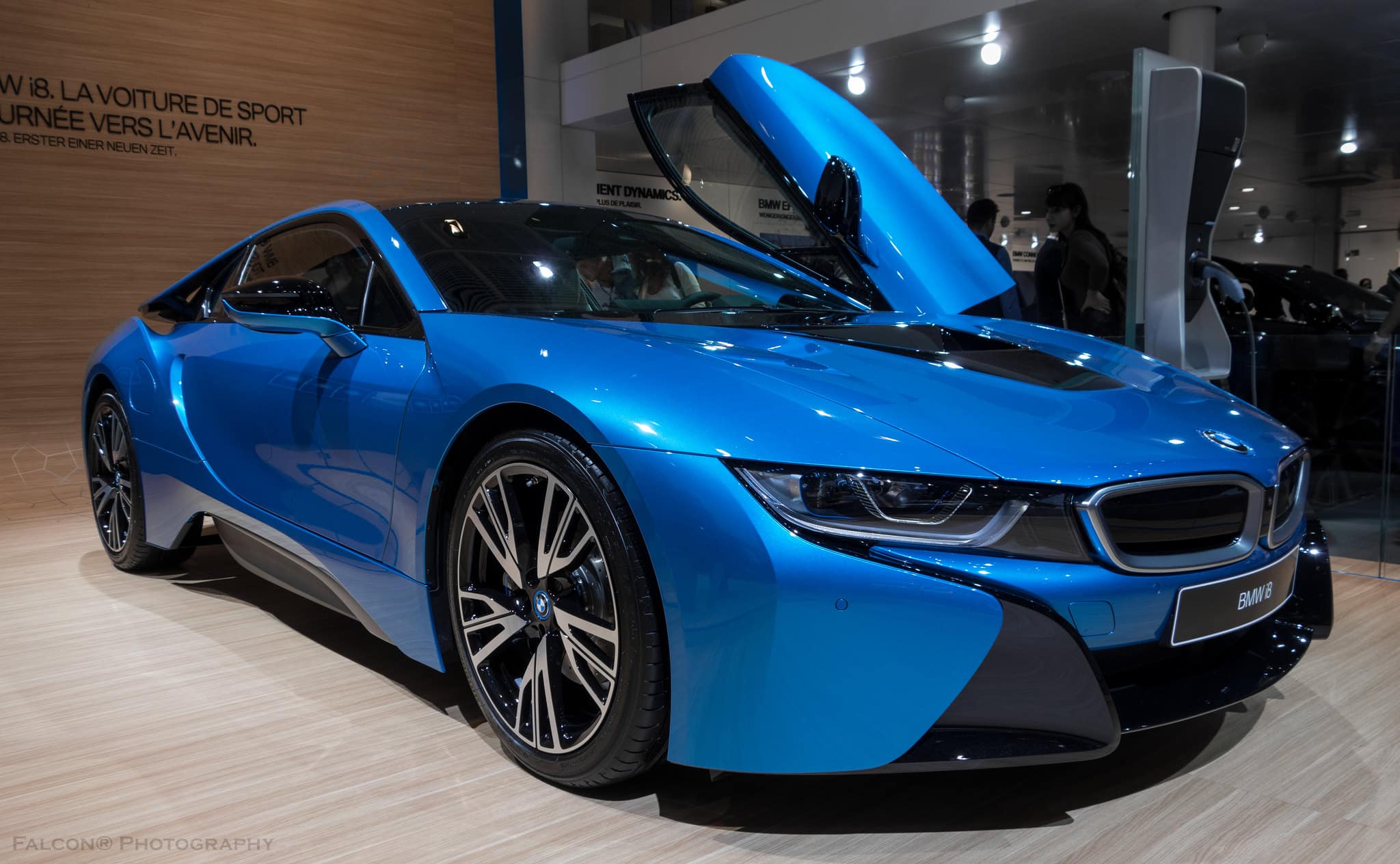Hybrid cars, in all their forms and variations, have become integral parts of our automotive worlds in recent years. These combine traditional internal combustion with electricity, which offers a smooth drive and surprisingly low fuel consumption. This concept was pioneered and then perfected by Toyota, whose Prius and similar models made this new technology widely available. But fuel-saving and environmentally friendly as they may be, such vehicles aren’t that exciting from a driver’s point of view. Luckily, several manufacturers reckoned some stunning cars could be made if this technology was used differently. And one of them was BMW, which decided to make a high-end sports car in a hybrid form. Its name is i8, and here’s the story of it.
BMW i8 – the sports hybrid
Although there are differences between various models, all hybrid cars work on a similar principle. For a start, there is a traditional internal-combustion engine, which uses gasoline, diesel, or some other form of fuel. Then, there is an electric motor, which gets its electricity from a battery pack. But unlike in full EVs, these batteries are much smaller, as their range doesn’t need to be extensive. These two motors are joined in a way that they can work separately or together, depending on the driving conditions. For instance, in slow city environments, only the electric motor will be working to save fuel. But when more power is needed, such as when accelerating, the internal-combustion engine will also kick in. These will work together to provide maximum output and the best possible performance. In addition, some of the power generated during these periods will also be used to recharge the batteries. As a result, hybrid vehicles, when used correctly, are very fuel efficient and environmentally friendly.
Some car makers, however, recognized this relatively new technology has potential in high-end sports cars, as it can improve their performance. This is, for the most part, down to the electric motor and its torque-delivery characteristic. Unlike internal-combustion engines, they have all their power available from the start, with no need to wait until revs build up. And this feature is what, when paired with a turbocharged engine, helps reduce or eliminate its lag. Consequently, a car with such a drivetrain will be faster off the line and have better momentum during gearshifts. One of the manufacturers deeply interested in this was BMW, who, in 2014, after several concept models, finally came up with their i8 hybrid.
BMW i8 – the looks
The i8 looks are one of the things that completely separates it from the rest of the BMW range. Most of the cars made by this Bavarian manufacturer, even the high-performance M models, are traditional in their shape. In contrast, the sporty i8 hybrid, with its radical shape, is nothing like them. When standing next to it, deciding from which angle it looks most striking is anything but a simple task. At the front, a low, sloping hood with a big air vent is accompanied by an aggressive-looking grille and headlights. From the side, the streamlined silhouette is dominated by massive rear arches. But the design of the back is the most unusual. It has air vents integrated into its top, spoiler-like side edges, and a diffusor at the bottom. Undoubtedly, driving behind the i8 is an amusing spectacle.
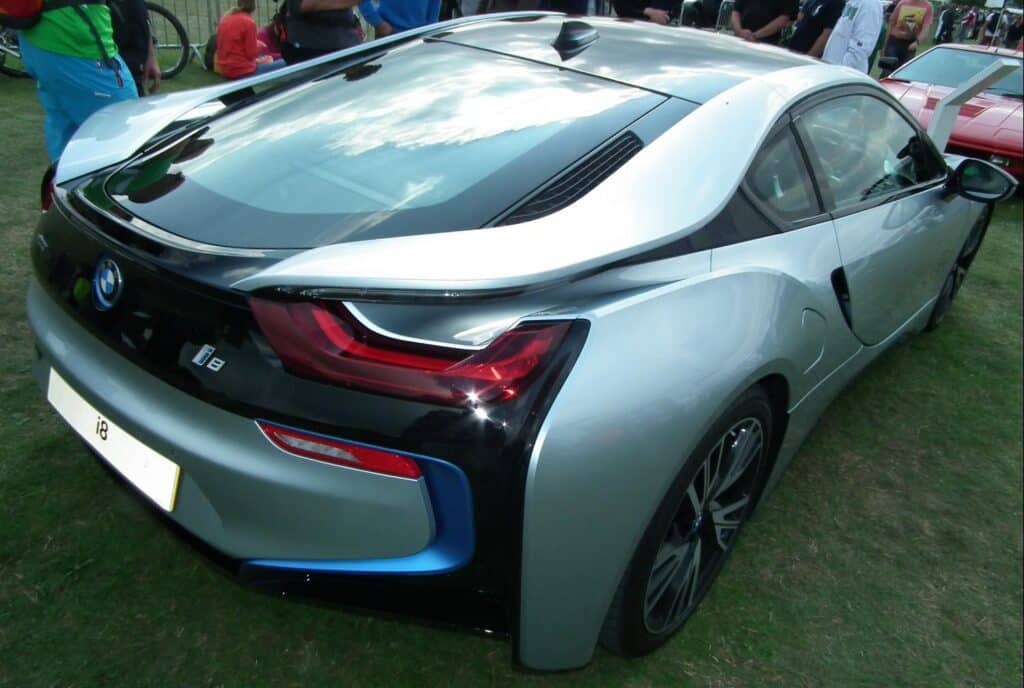
The BMW i8 was available in two body forms, either as a coupe or a roadster. The main difference between the two, apart from the absence of a roof, is how many passengers they can carry. While the coupe is equipped with four seats, the roadster, predictably, has only two. The body in both variants is made from carbon fiber with an aluminum structure beneath it.
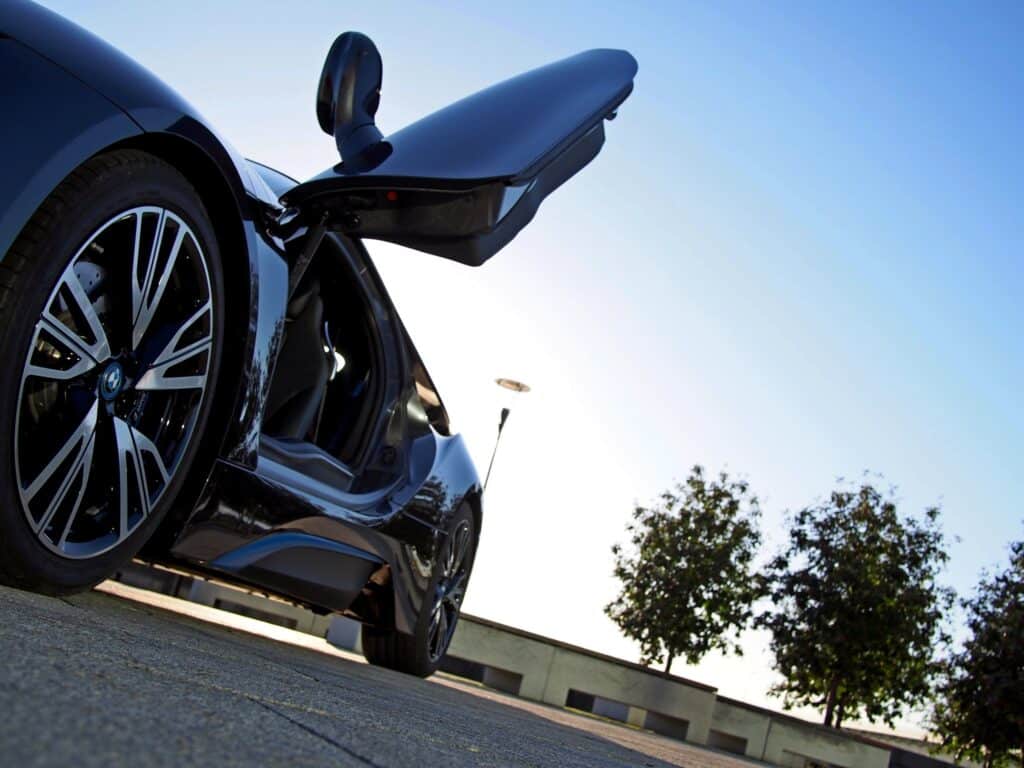
One of this car’s unique features is its doors, as the way they open is quite unusual. While many high-performance cars use scissor doors that move vertically, BMW opted for a slightly different solution, called butterfly doors. These have hinges that allow them to open vertically and outwards, which allows easier entry.
BMW i8 – what’s underneath
Despite the differences in size or power, almost every BMW made in the last few decades has the same basic layout under its skins. This involves the engine in the front, several seats in the middle, and a rear-wheel drive at the back. Sure, there are 4×4 models, but that doesn’t change the basic conception much. But the i8 has its engine at the back, just behind the seats, making it a mid-engined car. This is a configuration many manufacturers use for their high-performance sports cars, as it offers excellent weight distribution. So, it’s no wonder BMW had chosen this setup for the i8.
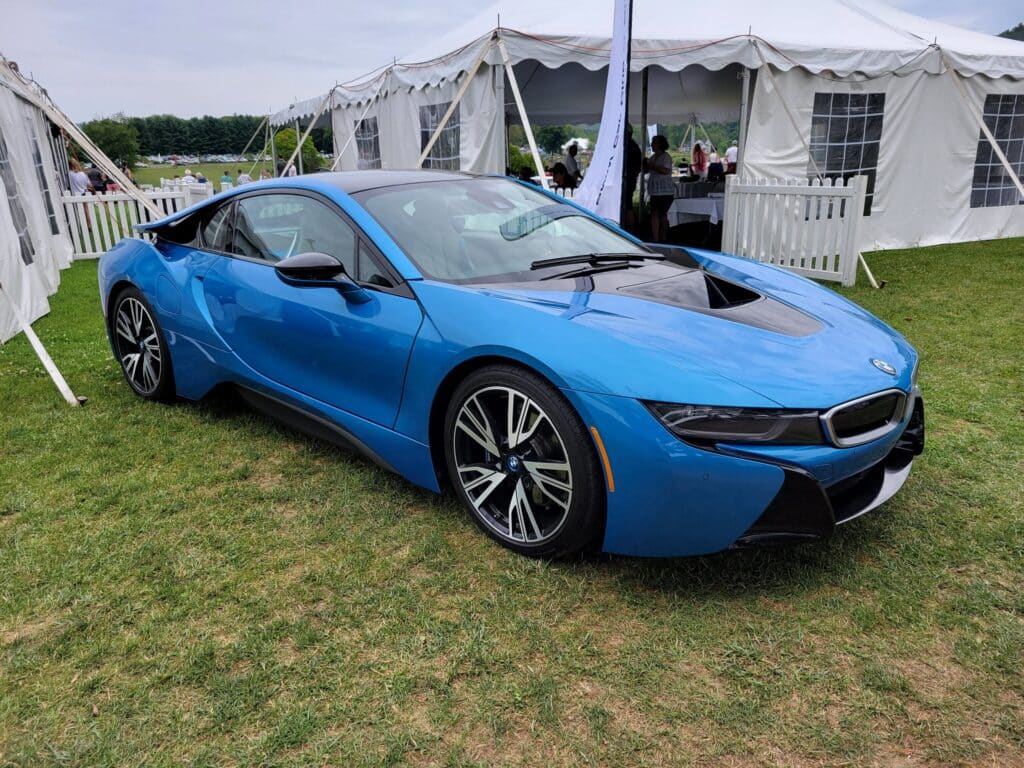
The engine, however, they’ve decided to use for this sports car may seem a bit odd at first. Of all the available units, BMW chose the smallest 1.5-liter gasoline engine, which only has three cylinders. While this doesn’t sound like a promising start, this engine has a few aces up its sleeve, which should up the performance. This includes a state-of-the-art turbocharging system, ingenious valve timing technology, and direct fuel injection, just to name a few. Thanks to all these technological wonders, the i8’s gasoline engine pushes out an astonishing 228 horsepower. This is then delivered to the rear wheels through a superb 6-speed automatic transmission made by Aisin Seiki.
Then, there is a 131-horsepower electric motor at the front, which predictably drives the front wheels. It has enough juice for the car to move in electric-only mode, with the gasoline engine completely turned off. But when they are both on, the i8 becomes a four-wheel-drive road-biting bullet with nearly 360 horsepower on the tap. And the best thing is, with no mechanical parts connecting the front and rear axles, it’s also light. This also saves space in the middle of the vehicle, which instead accommodates the lithium-ion battery pack.
BMW i8 – as a daily driver
The BMW i8, despite its hybrid drivetrain, is primarily a sports car, and the performance figures that’ll back that up. When pulling off the line at full throttle, it’ll hit 60 in less than 5 seconds and will keep going up to electronically-limited 155 miles per hour. And thanks to its lightweight construction and low center of gravity, it handles exceptionally through corners. So, that’s the performance bit ticked off.
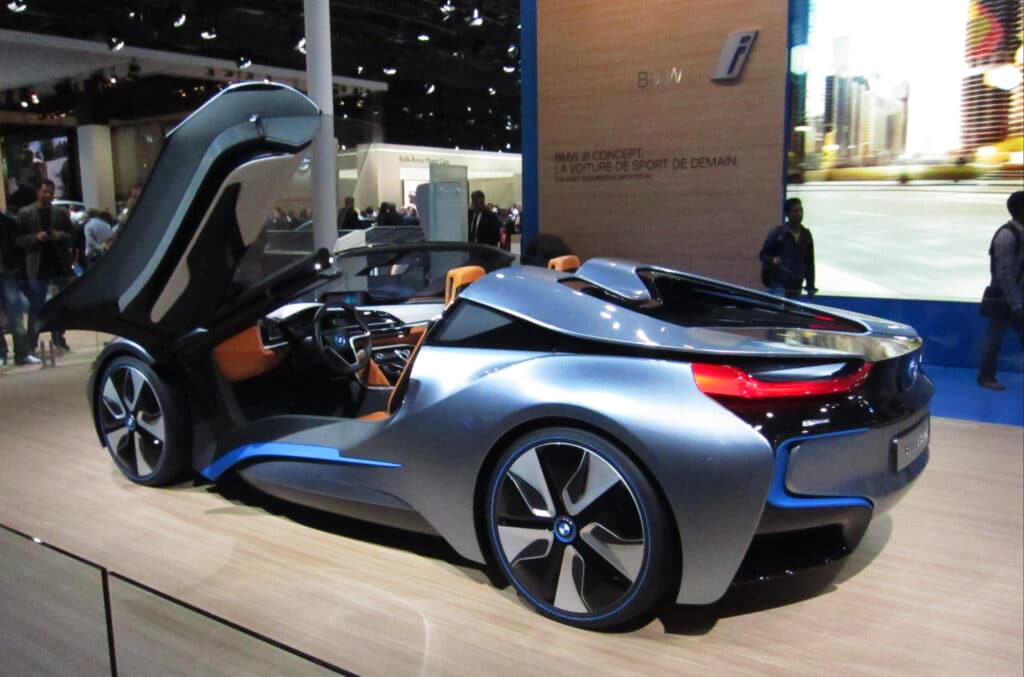
Now, for the hybrid and electric part of the equation. For a start, when in full-electric mode, the i8 can cover nearly 20 miles. Sure, that’s not much, but it’s enough for most daily commutes. Moreover, using it in this mode is excellent for urban stop-go traffic, where handling conventional performance cars can be challenging. And even with the gasoline engine running, it will still return up to 130 miles to the gallon. One of the features making this possible is regenerative braking, which captures otherwise wasted energy and uses it to recharge the batteries.
Lastly, there is the interior, which, in the coupe version, is spacious enough to accommodate seats for four adults. Such configuration, uncommon for a car of this type, is made possible by the drivetrain and its compactness. Again, this is because no mechanical parts are taking up the space between the front and rear of the car.
BMW i8 – conclusion
The i8 is BMW’s attempt at creating a sports plug-in electric hybrid, and it was made between 2014 and 2020. This car has a three-cylinder gasoline engine at the back, driving the rear wheels, and an electric motor that drives the front axle. Combined, these have an output of 360 horsepower and can cover up to 20 miles in electric-only mode. Thanks to its advanced drivetrain and clever body configuration, the BMW i8 is an excellent performance car and practical daily driver. This undoubtedly helped with its popularity and made it the best-selling hybrid sports vehicle. Before the production ceased in June 2022, more than 20,000 BMW i8 left the assembly line in Leipzig.



